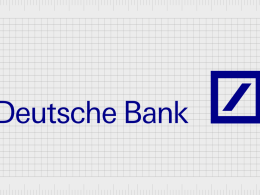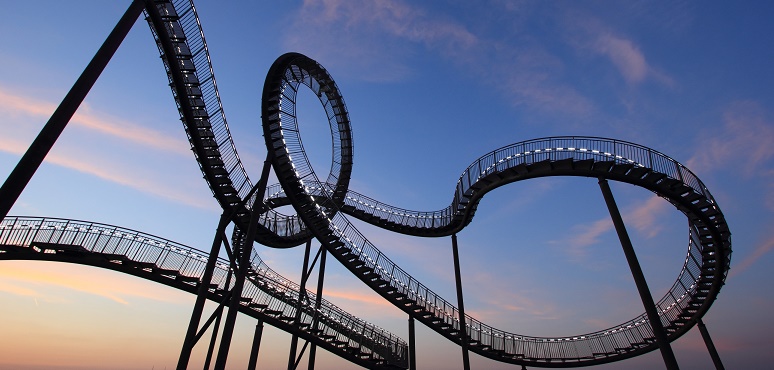by Hubert Marleau, Market Economist, Palos Management
The WSJ made the interesting observation that the S&P 500 is on one of its longest streaks without a 1% daily move in the past five decades, highlighting how the latest leg of the stock market rally has been a gradual climb rather than a euphoric surge. According to Dow Jones MarketData, broad equity gauges have gone up almost 10% without any serious interruptions--it is the sixth-longest run since the end of 1969. During this extended period of calm trading, the Cboe Volatility Index (VIX) which measures expected swings in the S&P 500 has narrowly fluctuated between 13.50 and 12.50 since mid October. The thing is that the dramatic U-Turn in the U.S. monetary stance and the prospect of an end to the trade dispute, brought bullish economic sentiment for investments and growth. So far so good.
The recent batches of economic data, like employment, retail sales, international trade and productivity of existing workers have lifted estimates for economic growth. The Atlanta Fed’s Now Casting Model is suggesting that real growth increased at an annual pace of 2.3% in Q4/19. It was only 0.3% last October. Bloomberg has crunched the numbers over the weekend to figure the exact odds for a recession in the next year. It’s 26% down from 55% last January.
Meanwhile, Chinese economic activity appears to be rebounding as industrial production and business investments beat expectations in December and retail sales are stabilizing around an annual growth rate of 8.0%. There are two other revealing points. Gold price has diverged from the amount of global negative-yielding debt—the widening gap points to higher inflation ahead. Copper prices have moved up faster than gold prices—the divergence usually means a brighter outlook for global growth.
Consequently, risky asset prices via equities and credit risk premiums performed well alongside some insurance from larger gold holdings, higher cash positions, bigger short positions in the Greenback plus an accumulation of instruments (CBOE Skew Index) that protect investors against black swan events and tail risk. Put simply, investors are predominantly hopeful about the economic outlook but not without taking some expensive insurance coverage. against known or unknown uncertainties. Perhaps strangely, these hedges are allowing investors to buy risky assets without fear of being blindsided by uncertainties on the smooth bullish ride down lovers’ lane that is generously provided by the Fed.
Indeed, it will be tough to buck this phenomenon because there are indications that the injection of liquidity will be maintained. All major central banks are on a buying binge, reducing the
chance of having an intolerable amount of market volatility that could be caused by shifting supply chains and the displacement of trade, an elusive recovery, a short lived truce or contrasting technology rivalries between China and the U.S.
-
- The Federal Reserve has indicated that they are willing to let the economy run hot, reiterating that the 2% inflation level is a target and not a ceiling.
- All central banks in developed countries have not given any signals that they may raise rates. On the contrary, the Old Lady may even cut rates.
- Purchases of government bonds by the Federal Reserve, the ECB and the Bank of Japan in the form of QE is expected to be as much as $860 billions in 2020 compared to only$240 billion in 2019, according to the strategists at the Toronto Dominion Bank.
- John Authers in a Bloomberg piece, pointed out that ahead of the signing of the “phase one” agreement, the U.S. Treasury announced that it no longer deemed China to be a currency manipulator. I’m not in the corridors of power and I do not have any informational advantages, but it looks to me as if this was tied to the trade deal. In removing another trade irritant, it gives the Chinese authorities greater flexibility to manage their monetary policies. In this respect, the People’s Bank of China announced a reduction in banks’ required reserve ratio, effectively allowing more lending. An opening of the monetary spigots will eventually get reflected in both reserves and liquidity in the emerging markets.
The aforementioned monetary factors effects on the stock market are hard to determine as many other factors like earnings, business confidence, consumer sentiment and money supply also play crucial roles. Yet, there is enough evidence to say that liquidity is just as important as the cost of money in determining the path of equity prices. Investors should note that central banks have little choice but to inject liquidity into the international banking system.
CrossBorder Capital, whose research is outstanding, has come up with estimates in the FT that show that world debt levels now exceed $250 trillion—-about 320% of world GDP—and roughly double the $130 trillion pool of global liquidity. Liquidity is basically funds that flow through the traditional banking system and through the repo and swap markets. Acknowledging that wholesale money markets have been fuelled by vast inflows from corporate and institutional cash pools, such as those controlled by cash-rich companies, asset managers and hedge funds, the cash-controlled business of derivative traders, sovereign wealth funds and foreign exchange reserve managers, these pools exceed $30 trillion and have outgrown the banking systems. The size of these pools is so big that they easily exceed the insurance thresholds for government deposit guarantees. Thus the system needs the participation of central banks. What it means is that QE is here to stay.
When one combines balance sheet expansion in perpetuity as a trend under the belief that the bar for the resumption of rate hikes is high, it makes sense that the regime is contributing to elevate the price of risk assets. Yet, P/E valuations are elevated in absolute terms. Accordingly, I suspect that the stock market could pause or correct itself over the short term to allow fundamentals to catch up with the bullish sentiment. Equities have run too far and too fast. As a rule, the S&P should rise around 9% when soft economic data turns positive for three months in a row. The S&P is up 14% since mid-October. Historical market data is suggesting a possible 5% drawdown.
It would likely be a short term correction because the equity risk premium is one of four factors that I rely on to access the state of the market and it’s still below its historical average. The misery index is bullish but the rule of twenty and real earnings yields are neutral and flashing yellow signs. I would buy the dips because the bears have it wrong. The dividend yield for the S&P 500 is 1.80%, the same as the yield on 10-year U.S. Treasury Notes. Based on historical relationship between these two yields, the dividend yield should be 20% lower. This is what is going on.
Copyright © Palos Management















